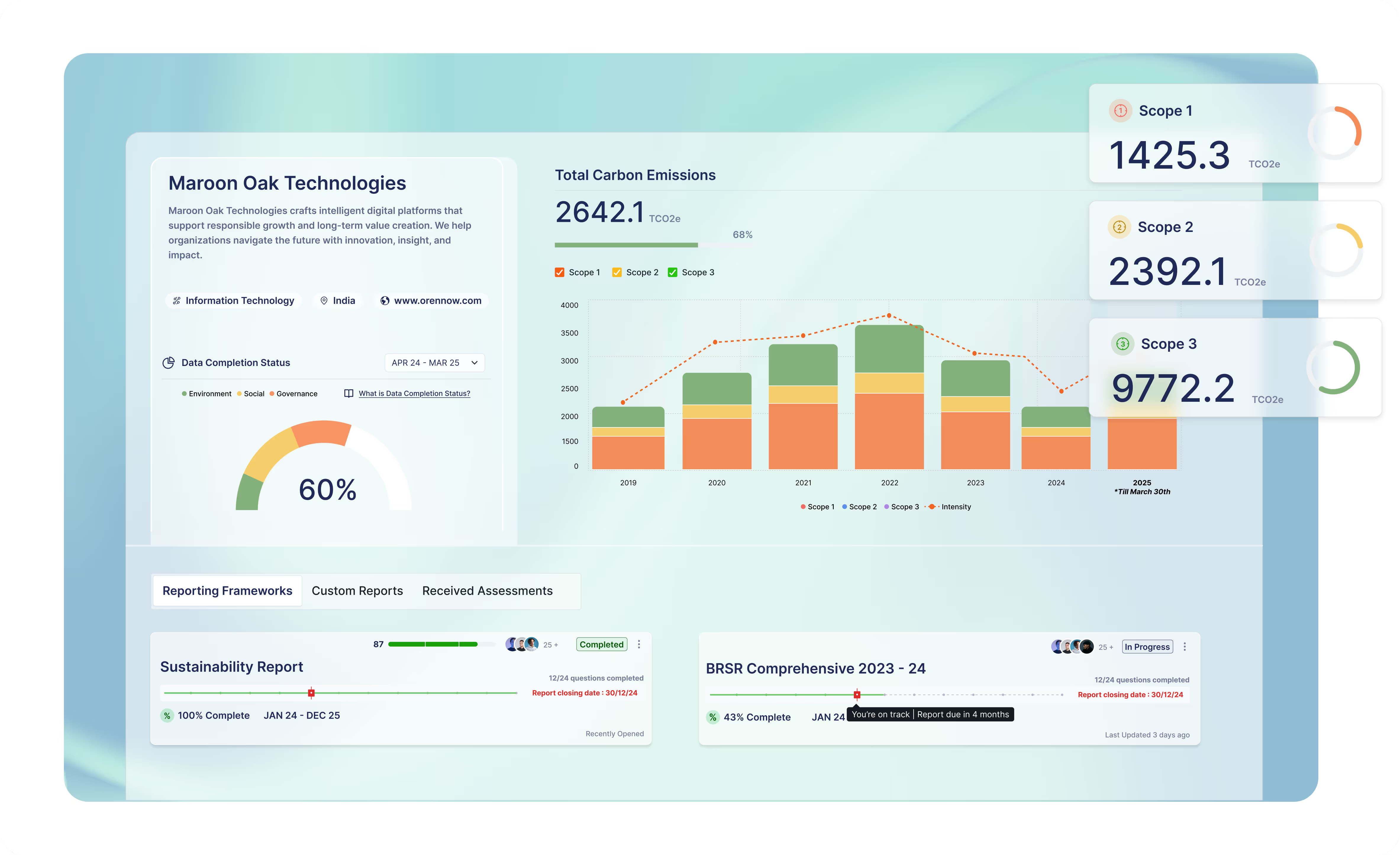Pharmaceutical Industry & Carbon Footprint: Tackling Scope 3 Emissions for Sustainability

The urgency of addressing climate change is undeniable, and the pharmaceutical industry, a critical sector for global health, plays a significant role in this global challenge. While efforts to reduce direct emissions (Scope 1) and purchased electricity emissions (Scope 2) are vital, a closer look reveals that the lion's share of the pharmaceutical industry's carbon footprint lies within Scope 3 emissions – those arising from its value chain. Understanding and tackling these indirect emissions is not just an environmental imperative, but a crucial step for pharmaceutical companies on their journey to net zero.
If the global healthcare sector were a country, it would rank as the 5th largest greenhouse gas emitter on the planet. Within this sector, pharmaceutical companies release more Scope 1 and 2 emissions per $1 million of revenue than automotive companies. However, the true extent of their environmental impact becomes clear when we consider Scope 3 emissions, which constitute the vast majority of their overall footprint.
Why are Scope 3 Emissions So Significant for Pharma?
According to a recent report, the top 10 pharmaceutical companies reveal that Scope 3 emissions account for a staggering 92% of their normalised GHG emissions. This dwarfs the contributions of Scope 1 (5%) and Scope 2 (3%) emissions.
This dominance of Scope 3 emissions is due to the complex and extensive lifecycle of pharmaceutical products. From the sourcing of raw materials to the end-of-life treatment of sold products, numerous stages contribute indirectly to the industry's carbon footprint. Therefore, any meaningful decarbonisation strategy for pharmaceutical companies must place a strong emphasis on addressing these value chain emissions.
Unpacking the Categories of Pharmaceutical Scope 3 Emissions
The GHG Protocol classifies Scope 3 emissions into various categories. Below are the most relevant categories for the pharmaceutical industry:
1. Purchased Goods & Services (55%)
- This is the largest contributor, encompassing emissions associated with the extraction, production, and transportation of goods and services purchased by the company. For pharmaceuticals, this includes raw materials, feedstocks (nearly 99% of which are currently petrochemical-derived), packaging materials, and various other inputs.
- Initiatives like adopting bio-based/renewable feedstocks, secondary and tertiary packaging reduction, and packaging substitution with more sustainable materials directly address this significant category.
2. Use of Sold Products (20%)
- This category is particularly relevant for certain pharmaceutical products, such as metered-dose inhalers (MDIs). The current propellants in MDIs have high global warming potentials, and the "use phase" accounts for roughly half the GHG emissions of major global inhaler manufacturers.
- Inhaler reformulation with lower GWP propellants is a key initiative to tackle these emissions.
3. Upstream Transportation & Distribution (6%)
- This includes emissions from the transportation and distribution of goods and services purchased by the company, from its suppliers to its own operations.
- Initiatives like mode mix optimisation (shifting to less carbon-intensive transport like ocean and rail) and freight route and load optimisation aim to reduce emissions in this area.
4. Capital Goods (3.5%)
- Capital goods are long-term assets such as machinery, equipment, and buildings that a company uses to produce products or services. Emissions in this category arise from the extraction of raw materials, manufacturing processes, and transportation involved in creating these assets. For example, constructing a new manufacturing plant or purchasing heavy machinery entails significant energy consumption and material use, contributing to the company's carbon footprint.
- To mitigate these emissions, companies can invest in energy-efficient technologies, source materials from sustainable suppliers, and adopt circular economy principles by refurbishing or recycling existing equipment.
5. Business Travel (2%)
- This category includes emissions resulting from employee travel for business purposes, encompassing air travel, rail journeys, car rentals, and hotel accommodations. Air travel is particularly carbon-intensive, often representing a substantial portion of business travel emissions.
- Companies can reduce their impact by promoting virtual meetings, encouraging the use of public transportation, implementing travel policies that prioritise lower-emission options, and supporting carbon offset programs for unavoidable travel.
6. Fuel & Energy Related Activities (2%)
- This category accounts for emissions associated with the production, processing, and transportation of fuels and energy purchased by the company, which are not already included in Scope 1 or Scope 2 emissions.
- Companies can address these emissions by sourcing energy from renewable providers, enhancing energy efficiency within their operations, and engaging in energy conservation initiatives.

7. Employee Commuting (1%)
- Emissions in this category result from employees traveling between their homes and the workplace. Factors influencing these emissions include the distance traveled, mode of transportation, and frequency of commuting.
- To reduce this impact, companies can implement programs such as telecommuting, flexible work hours to avoid peak traffic, incentives for using public transportation or carpooling, and support for cycling or walking to work
8. Downstream Transportation and Distribution (1%)
- This category encompasses emissions from the transportation and distribution of the company's products to end consumers, including retail and storage emissions. It covers various modes of transportation such as trucking, shipping, rail, and air freight.
- Optimising logistics by consolidating shipments, selecting energy-efficient carriers, utilising low-emission vehicles, and strategically locating distribution centers can help reduce these emissions.
9. Waste Generated in Operations (<1%)
- Emissions from this category arise from the disposal and treatment of waste produced during the company's operational activities. This includes emissions from landfilling, incineration, and wastewater treatment.
- Implementing low-carbon laboratory practices with better waste management and focusing on solvent recovery in manufacturing can address this.
10. End of Life Treatment of Sold Products (<1%)
- This category accounts for emissions resulting from the disposal and treatment of products after they have been used by consumers. Activities such as landfilling, incineration, and recycling of products contribute to these emissions.
- Companies can address this impact by designing products for durability and recyclability, implementing take-back or product stewardship programs, and educating consumers on proper disposal methods.
11. Processing of Sold Products (<1%)
- Emissions in this category stem from the processing of intermediate products sold by the company to downstream entities before they reach the final consumer. For example, if a company sells APIs (Active Pharmaceutical Ingredients) to a CDMO (pharmaceutical manufacturer), the emissions associated with transforming those APIs into consumer pharma products would be included here.
- Collaborating with customers to promote energy-efficient processing techniques and providing guidance on best practices can help reduce these emissions.
12. Investments (<1%)
- This category includes emissions associated with the company's investments, such as those from equity and debt investments, project finance, and managed assets.
- By integrating ESG criteria into investment decisions, engaging with portfolio companies on sustainability practices, companies can work to minimise these emissions.
It's important to note that some Scope 3 categories deemed immaterial for the top 10 pharmaceutical companies in this analysis (Upstream leased assets, Downstream leased assets, and Franchises) might be more relevant for other businesses.
The Path to Net Zero Requires a Scope 3 Focus
Given the significant contribution of Scope 3 emissions to the pharmaceutical industry's carbon footprint, achieving net-zero targets requires a comprehensive and concerted effort to address these indirect emissions. Successfully tackling Scope 3 emissions requires pharmaceutical companies to:
- Gain deep visibility into their value chain: This involves accurately measuring and tracking emissions across all relevant Scope 3 categories.
- Engage and collaborate with suppliers: Given that purchased goods and services are the largest contributor, close collaboration with suppliers is crucial to encourage their own decarbonisation efforts. This includes setting sustainability requirements, providing training, and aligning on common goals.
- Innovate in product design and development: This includes exploring alternative feedstocks, reducing and substituting packaging, and reformulating products to lower their environmental impact during use and disposal.
- Optimise logistics and transportation: Implementing more efficient transportation modes, routes, and load management can significantly reduce emissions.
- Foster a circular economy approach: Initiatives like takeback programs aim to minimise waste and promote the reuse and recycling of materials.
Conclusion
Addressing Scope 3 emissions is essential for the pharmaceutical industry’s sustainability efforts, as they account for 92% of its carbon footprint. Deep supply chain visibility, supplier collaboration, and innovation are key to meaningful decarbonisation.
Oren Sustainability Hub empowers pharmaceutical companies with data-driven solutions to measure, track, and reduce Scope 3 emissions, accelerating their journey to net zero. By taking decisive action now, the industry can lead the way in climate responsibility while ensuring a healthier planet for future generations.
Latest Blog Posts
Dive into our blog for insights on making your organization more sustainable.
Sustainability Simplified
Wherever you are in your sustainability journey, we help you advance with confidence.
Schedule a Call



.avif)

